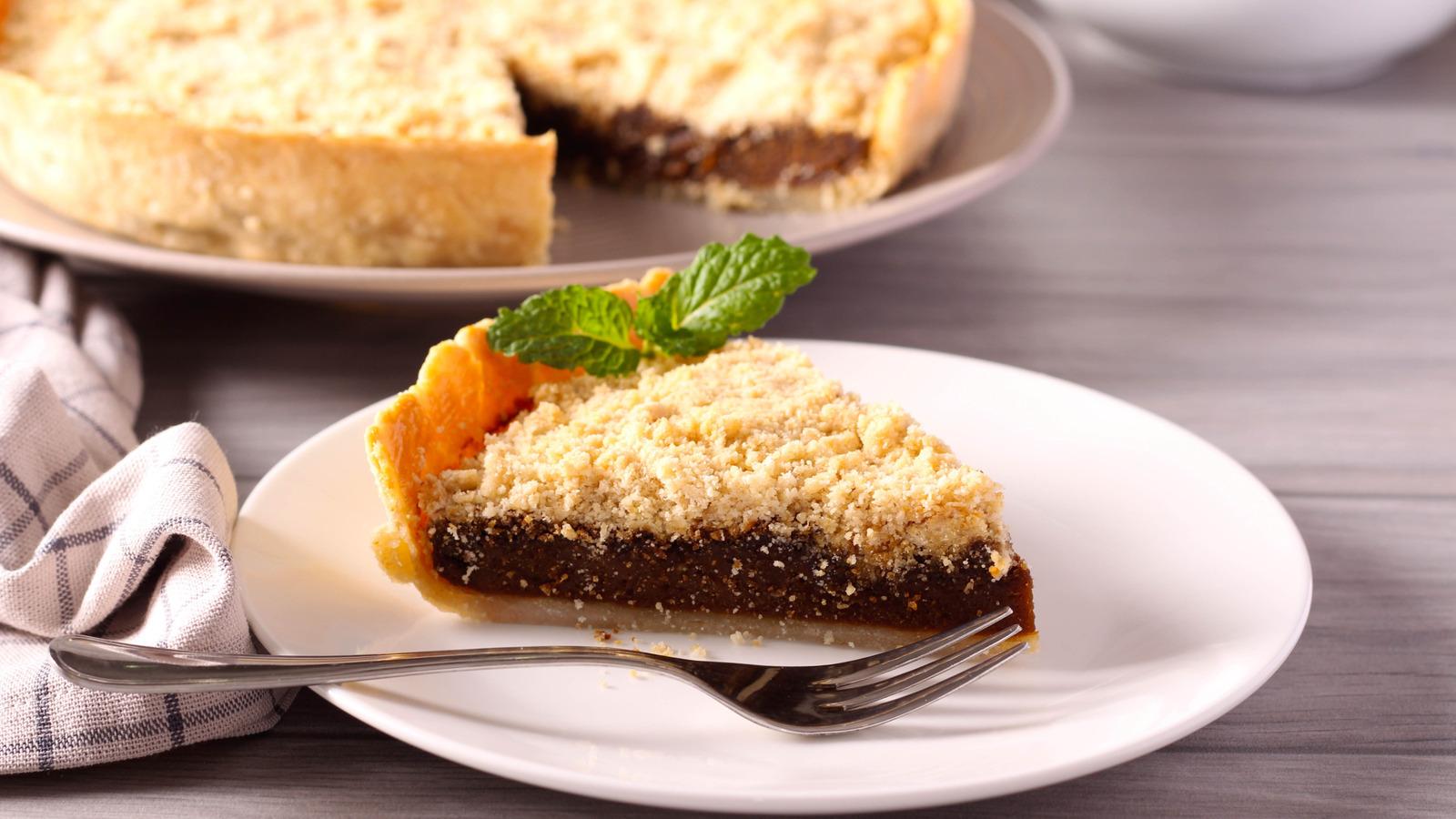
MShev/Shutterstock
The 1940s were a challenging time for home cooks. Rationing meant that baking staples like sugar, eggs, and butter were in short supply. But, despite these constraints — or perhaps because of them — home bakers turned out some truly memorable desserts that have mostly faded from view. These recipes often stretched sugar with fruit, swapped butter for oil, or used other leavening agents or binders in place of eggs.
While some of these desserts predate the '40s, they captured the spirit of the decade. There was a reason they were popular at this time. They were staples in home kitchens, whether folks were trying to make something special for a birthday or holiday, or just wanted a little sweet treat at the end of the day. These are the kinds of recipes our grandparents might have made, whether clipped out of a magazine or found in a Betty Crocker cookbook.
It's time to bring back these vintage 1940s desserts. And not just for nostalgia's sake, but because many of them are genuinely delicious and surprisingly simple to make. Rather than requiring a lot of fancy ingredients, many of these desserts come together with pantry staples. Or at least don't include any ingredients you'll need to head to a specialty store to buy.
Snow pudding

Carpaumar/Getty Images
Snow pudding is a bit like lemon meringue pie, minus the crust. Recipes for snow pudding date back to the late 19th century, but it was particularly popular in the 1940s when Jell-O and other jellied desserts were reaching their peak. Jell-O was popular during the World War II era, when it was advertised as a way to stretch meals further. So, it's not a surprise that snow pudding was popular, well through the 1940s.
This dessert is made by dissolving gelatin in water, then whipping egg whites and folding them into the cooled gelatin mixture until it resembles soft, snowy clouds. Lemon juice and lemon zest are added to flavor it. It tended to be served with a simple custard or a lemon sauce.
One of the reasons for its popularity in the '40s may have been that it didn't require butter or cream when those ingredients were rationed or expensive. Eggs also would have been rationed, but many people kept chickens at home, so they would have been easier to come by.
Want to bring it back today? You can find plenty of snow pudding recipes online. It's a perfect dessert for warm weather, as it's bright and lemony without the weight of a cake or pie. If you're looking for a vintage dessert that feels oddly modern and refreshing, this might be the one.
Prune whip
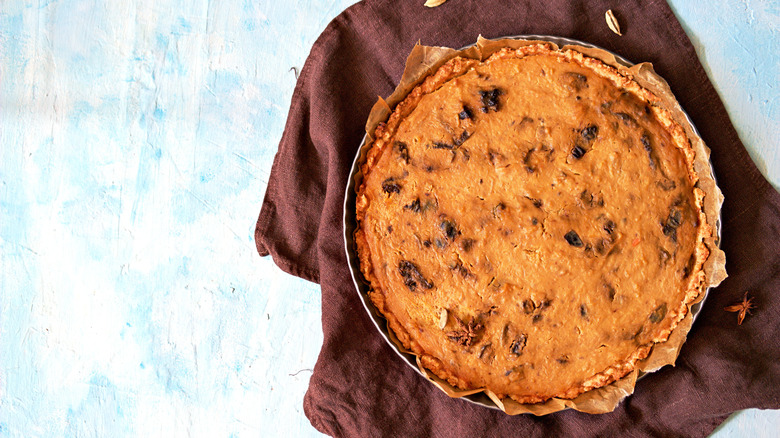
Stock_photografer/Shutterstock
Prune whip may sound unglamorous, but it was a staple on 1940s tables for a reason. Prunes were affordable, easy to store, and naturally sweet, making them a smart ingredient to create dessert with during times of rationing or steep grocery costs.
To make prune whip, prunes are stewed until soft and folded into stiffly beaten egg whites along with a touch of sugar and lemon juice. The mixture can be baked until puffed and lightly golden, creating a soufflé-like texture. However, there are also recipes for chilled versions that don't need cooking. Another variation was to have prune whip baked into a pie. While it was popular in many households in the 1940s, it was already considered a bit of an old-fashioned dessert at that time. It clearly remained a thing throughout the decade and beyond, because it was a favorite of President Eisenhower in the '50s.
In an era where sugar was rationed, prune whip provided a way to have something sweet without much added sugar. While prune desserts might not be trending on Instagram these days, prune whip is worth bringing back. These dried fruits are unfashionable, but the truth about prunes is that they're just dried plums. And people don't have the same problem with plums, so we don't know what's up. Why not just try a little bit of prune whip? You might like it.
Steamed orange pudding
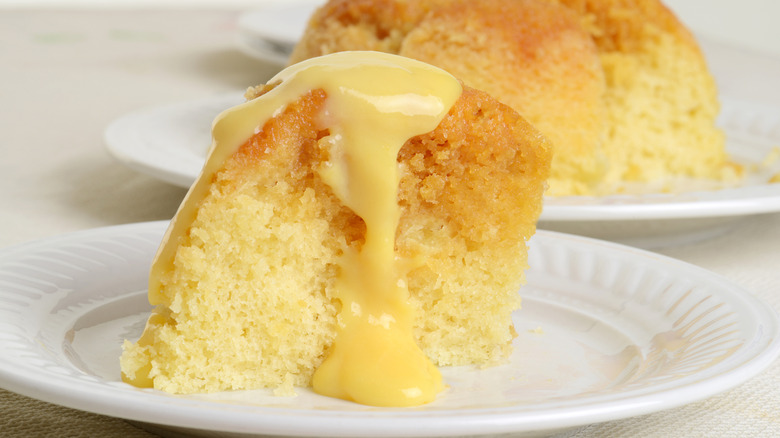
Michael C. Gray/Shutterstock
Steamed puddings were among the comfort desserts of the 1940s. Dense and stodgy — in a great way — they're often made in coffee cans or pudding basins set over gently simmering water on the stovetop. Steamed orange pudding was a recipe from the "Manual of Modern Cookery," the 7th edition of which was published in 1943.
This dessert involves making a simple batter enriched with fresh orange juice and zest, poured into a greased basin or mold, and steamed until cooked. It was served with an orange syrup, thickened with arrowroot. However, variations may have been served with custard, cream, or other sauces.
In the 1940s, when food was limited during the WWII period, oranges were a rarity in certain areas, making an orange dessert feel like a true treat. When imports got through, their sale was sometimes restricted to parents, to be given to kids. This does mean that this pudding was likely more of a common sight in the latter part of the 1940s, when restrictions on food were less prevalent. Either way, we'd love to see it make a comeback today.
Apple pan dowdy
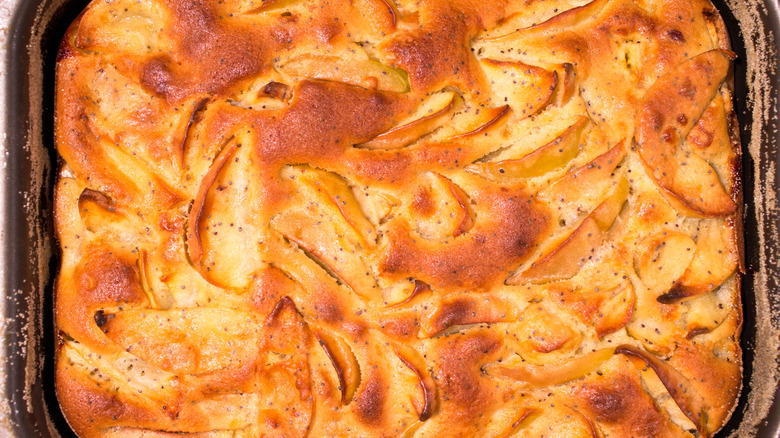
Photosiber/Shutterstock
Before the crisp and crumble dominated fall dessert menus, apple pan dowdy was where it was at. This 1940s favorite involves baking spiced apples under a pie crust that's later broken up and pushed into the bubbling fruit with a spoon during baking to soak up the juices. However, some people choose not to break up the crust, rather forming it into squares or triangles and layering it over the fruit.
The pan dowdy's rustic appearance was part of its charm, fitting perfectly with the 1940s emphasis on practicality and avoiding waste. It required fewer resources than a double-crust pie and was easier to assemble, making it a popular choice for busy households. It could also have been made with pastry scraps and didn't require too much sugar, due to the natural sweetness of the apples.
Apple pan dowdy deserves a revival for its homey comfort. It's less fussy than a pie but offers the same warm, spiced apple filling. It might have been around for a while, but it doesn't feel old fashioned. That's why apple pan dowdy is a perfect candidate for your next weekend baking project.
Rum balls
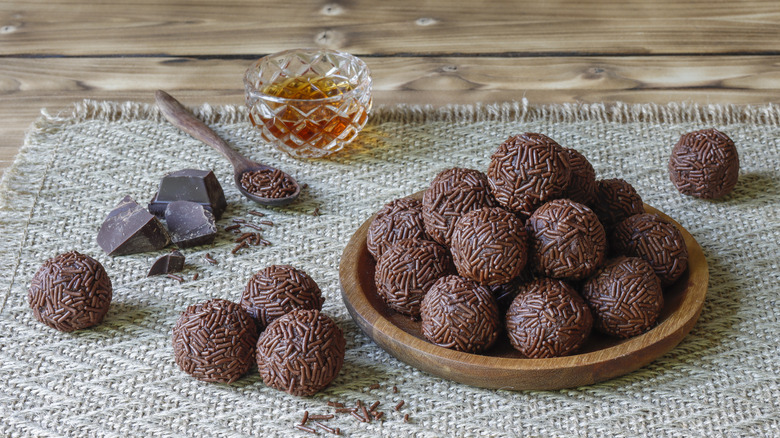
Annika Bitter/Getty Images
Rum balls might feel like something from your grandma's holiday cookie tin, but they're worth a revisit. One of the earliest recipes for them dates back to 1945, though they hit peak popularity in the '50s. If you're interested in making them, recipes aren't hard to come by. They require no fancy equipment or ingredients you can't find at a standard grocery store. And what's great is that they don't seem vintage. Plus, they're easy to customize with your choice of cookies or nuts.
They may have been popular during the 1940s when the spirit of rationing was still alive, even once it was over. These are fairly simple treats, even if the rum makes them decadent, made using vanilla waters, nuts, and other ingredients cooks may have already had in their pantries. While many recipes use vanilla wafers, rum balls could be made with whatever dry cookies or cake scraps were available, which meant nothing went to waste. Plus, they offered a bit of luxury, thanks to the hint of boozy warmth from the rum.
Once formed, rum balls were generally coated in chopped nuts, but if you make them today, there are so many other ways to customize them. You could roll them in cookie crumbs, cocoa powder, sprinkles, cinnamon powdered sugar, or anything else you like.
Blancmange
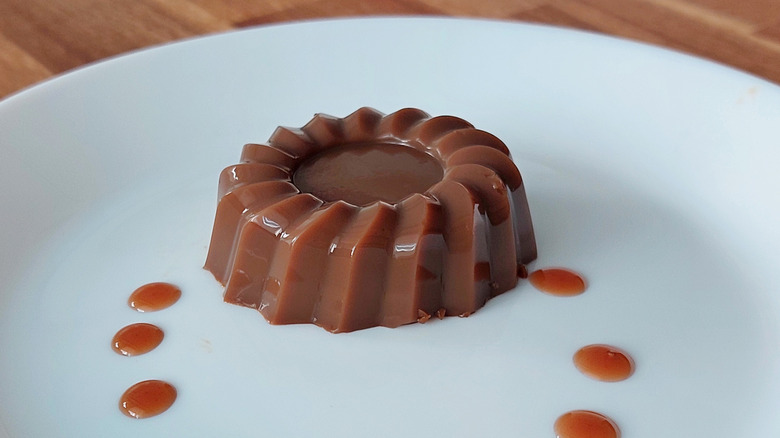
VicaTs/Shutterstock
Blancmange has been around for centuries, but it was a staple in many 1940s kitchens , often appearing as an economical dessert that felt a little bit fancy. The word itself sounds pretty refined, but the dish is essentially a milk-based pudding thickened with gelatin or cornstarch and flavored with vanilla or almond. However, modern versions may have other flavors, like coffee or chocolate.
In the 1940s, blancmange recipes were found in many cookbooks and advertised as a light dessert option, especially during wartime when resources were more scarce. It could be made with evaporated milk or powdered milk when fresh milk was hard to get, and it was often molded in decorative shapes to make it look more special on the table. There were also blancmange mixes advertised at that time. A bit like instant pudding, you'd just mix in milk or water and leave it to set.
This dessert might not be as intense or flavorful as some, but it has a kind of vintage elegance that we'd love to see brought back. The molds themselves are a thing of beauty, too, and making blancmange is a good reason to collect them. So, why not pick out a recipe and give this 1940s favorite a go?
Wacky cake
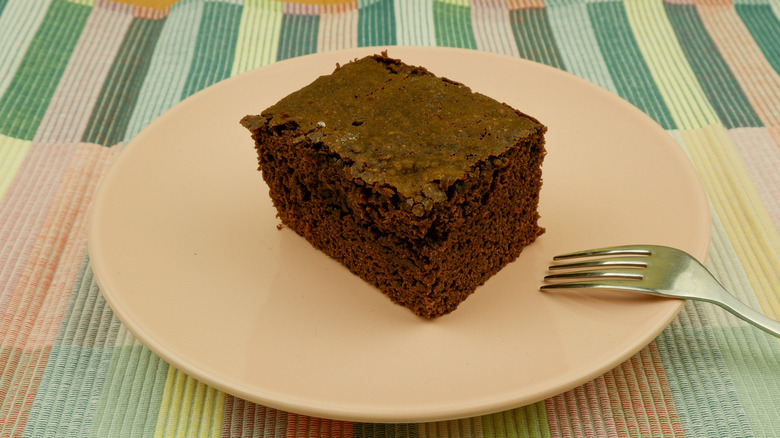
Tasty Escapes/Shutterstock
If you've ever come across a chocolate cake recipe that uses vinegar and baking soda to get its rise, you've likely found yourself making a version of wacky cake. This dessert became popular during the 1940s because it didn't need eggs, butter, or milk — all ingredients that could be hard to come by during the war.
Wacky cake is made by whisking together flour, sugar, cocoa powder, baking soda, and salt, then adding vinegar, vegetable oil, water, and vanilla. The vinegar and baking soda react to create lift, making the cake surprisingly fluffy despite the lack of eggs. Everything is often mixed directly in the baking pan, reducing the need for extra bowls.
It was the sort of recipe that parents could whip up for a child's birthday or a Sunday dessert without worrying about using up too many rationed ingredients. The cake was typically topped with a simple icing made from powdered sugar and cocoa or served with a dusting of powdered sugar if frosting wasn't on the cards.
Wacky cake deserves a comeback because it's easy, affordable, and vegan by default. It's also moist, chocolaty, and satisfying, showing us that a cake doesn't need butter or eggs to taste good. If you're looking for a vintage dessert that still feels relevant today, it might be time to put wacky cake into your baking rotation.
Angel pie
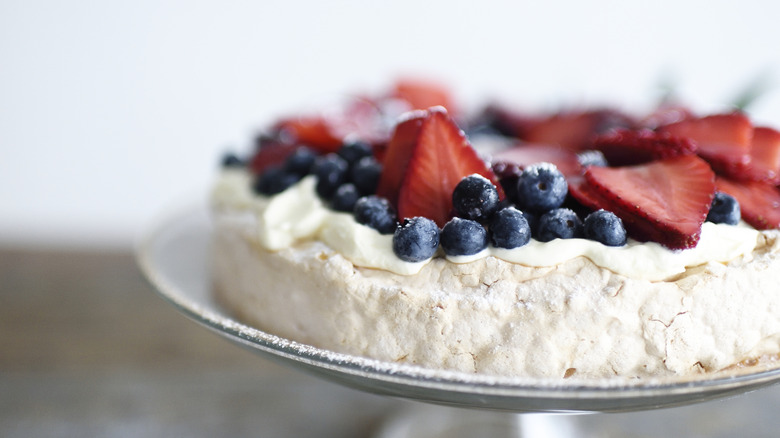
Carlina Teteris/Getty Images
Angel pie was a popular dessert in the 1940s that we bet you've never heard of. It has a crisp meringue shell and a soft interior, filled with lemon curd or chocolate mousse. It's a bit like a lemon tart or a chocolate pie but with meringue as the crust. There were all kinds of versions, one even appearing in a 1940s Duncan Hines cookbook. Something that sounds so good likely deserves more attention today.
The crust is made by whipping egg whites and sugar until stiff, then shaping the mixture into a pie shell and baking it low and slow until it's crisp on the outside while staying chewy inside. This part is somewhat like a pavlova. Once cooled, the shell is filled with a tangy lemon curd or a smooth chocolate filling. Some recipes finish things off with a whipped cream topping.
Angel pie was often made for birthdays, holidays, or family gatherings, and it's easy to see why it earned a place on those tables. It's naturally gluten-free, uses just a handful of ingredients, and looks beautiful when served. If you're looking for a dessert that feels light but tastes amazing, angel pie is worth revisiting. There are plenty of ways to update it, too, such as adding fresh fruit or your choice of sauces.
Fruit cocktail cake
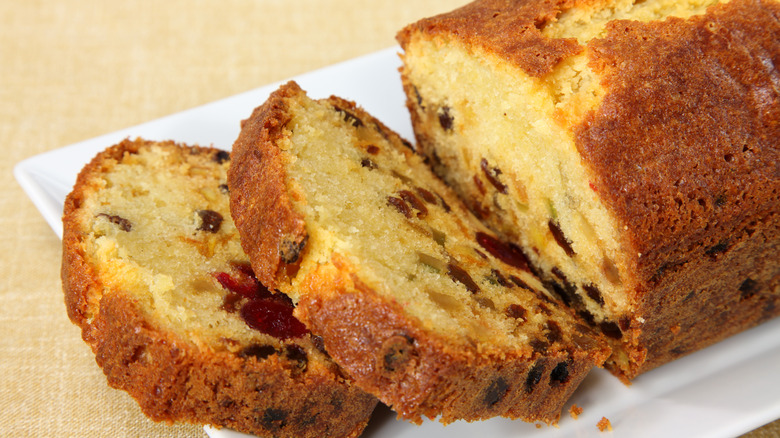
Dirkr/Getty Images
Fruit cocktail cake is exactly what it sounds like: a cake made with a can of fruit cocktail. This dessert became popular in the 1940s and stuck around in the decades that followed, partly because it was easy and inexpensive, but also because it was delicious. It might seem like a bit of a relic now, but it's actually tasty enough that we want a revival.
Today, canned fruit cocktail isn't particularly fashionable, but in the '40s, it was still a novelty. The history of fruit cocktail is debated, but we know it's been around since at least the 1930s, and was very popular in the 1940s — hence it making its way into cake. The cake itself comes together with basic pantry ingredients: flour, sugar, baking soda, and eggs (though some versions skip the eggs). The canned fruit cocktail is stirred in to create a moist, lightly sweet batter. Some recipes included the syrup to cut down on added sugar, which is thrifty in a very '40s way.
It was generally served plain with a dusting of powdered sugar. It's the kind of recipe you might find handwritten on a card in your grandmother's recipe box. Fruit cocktail cake is unfussy, comforting, and full of retro charm. It's also practical and it's forgiving if you want to experiment with other canned fruits or add-ins like nuts or spices.
Shoofly pie
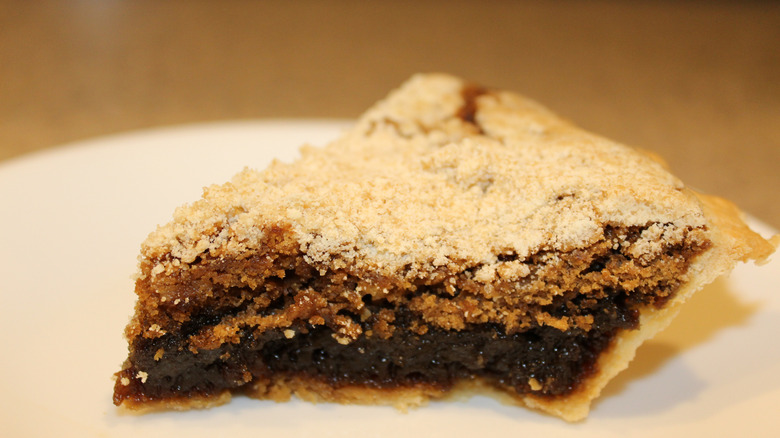
MelissF/Shutterstock
Shoofly pie is a Pennsylvania Dutch classic that became widely popular in the 1940s, in part due to the 1946 hit "Shoo Fly Pie and Apple Pan Dowdy," sung by Dinah Shore. Made with a molasses filling topped with a crumbly, flour-based streusel, it's a pie that's sweet, sticky, and deeply comforting.
The name "shoofly pie" is said to come from the days when pies would cool on windowsills, attracting flies that had to be shooed away. Although others say it comes from the name of a boxing mule who was part of a traveling circus in Pennsylvania. The texture is part of what makes shoofly pie special. The bottom layer is dense and sticky like a treacle tart, while the top is buttery and crumbly. Then, it's all contained within a pastry case.
Although there are a few different components to make, it comes together relatively quickly. And, while it might not be the 1940s way, you could use ready-to-roll pastry or a premade pie crust. It does seem fairly vintage, but not in an outdated way. We can see this being served on a holiday table or in a fancy bakery today.
Lemon frosted fruit bars
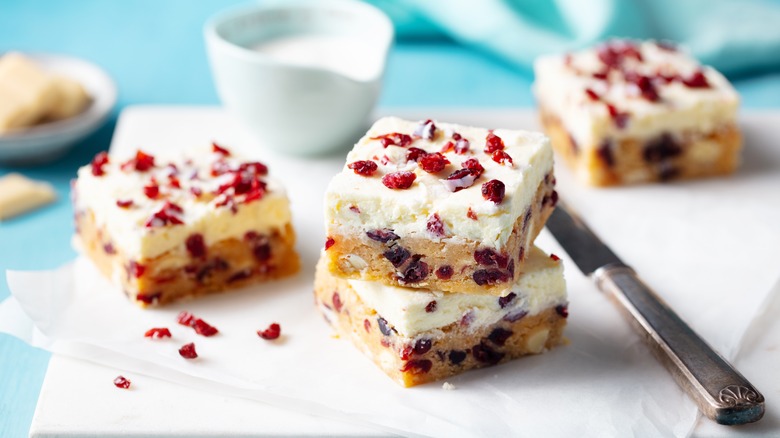
Anna_Pustynnikova/Shutterstock
If you're looking for a sweet treat that's bright and fruity, lemon frosted fruit bars are a vintage gem worth revisiting. Popular in the 1940s, these bars combined dried fruit with a cake base, topped with a tangy lemon frosting that added brightness and balance to the sweetness.
It came from a Betty Crocker recipe pamphlet called "Your Share: How To Prepare Appetizing, Healthful Meals with Foods Available Today," which was printed in 1943. This was not long after rationing was brought in by the U.S. government. During the 1940s, dried fruit was often used in desserts as a way to add natural sweetness without relying on large amounts of sugar, which was rationed. Lemons, while sometimes hard to get, were prized for their vitamin C and fresh flavor, and a little went a long way when juiced or zested into frosting.
Today, we might not see these as a fancy dessert, but they're great when you're wanting a casual sweet treat. And it's perfect for people who love lemon desserts. Whether you're looking for something to take to a potluck or have after a weeknight dinner, they're delicious and feel fairly contemporary.
Lazy daisy cake
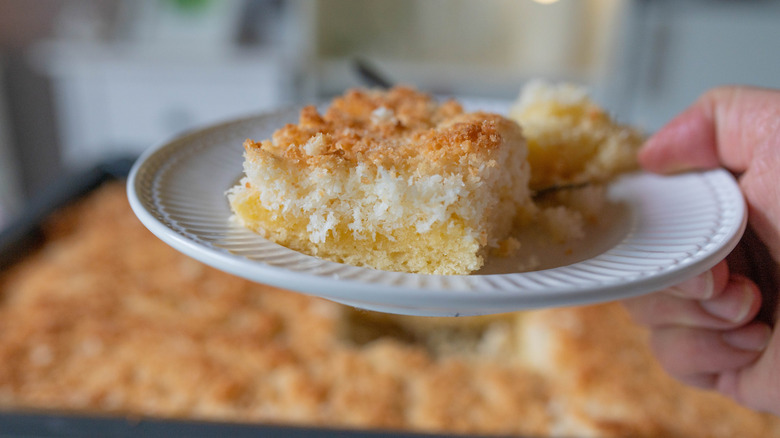
Angelika Heine/Shutterstock
Lazy daisy cake seems to have been lost to time, but it's a dessert we're desperate to see back on menus everywhere. Popular in the 1940s, this cake is simple but incredibly tasty, consisting of a plain sponge topped with a caramelized coconut and brown sugar frosting, that's a little like the icing on a German chocolate cake. It's the kind of thing that's delicious with coffee or tea. It's sweet without being overly sweet — no rich buttercream in sight.
The "lazy" part of lazy daisy cake likely comes from how easy it is to prepare. The batter comes together quickly without requiring any special techniques. Once baked, the cake is topped with a mixture of brown sugar, butter, shredded coconut, and a bit of cream or milk, then broiled to create a sweet, chewy, and slightly crunchy topping.
During the 1940s, the cake's simplicity and the use of common ingredients made it a popular choice for families looking to create something special without fuss. The broiled coconut topping tastes amazing and way more complicated than it actually is. We really want to bring this one back into rotation.



